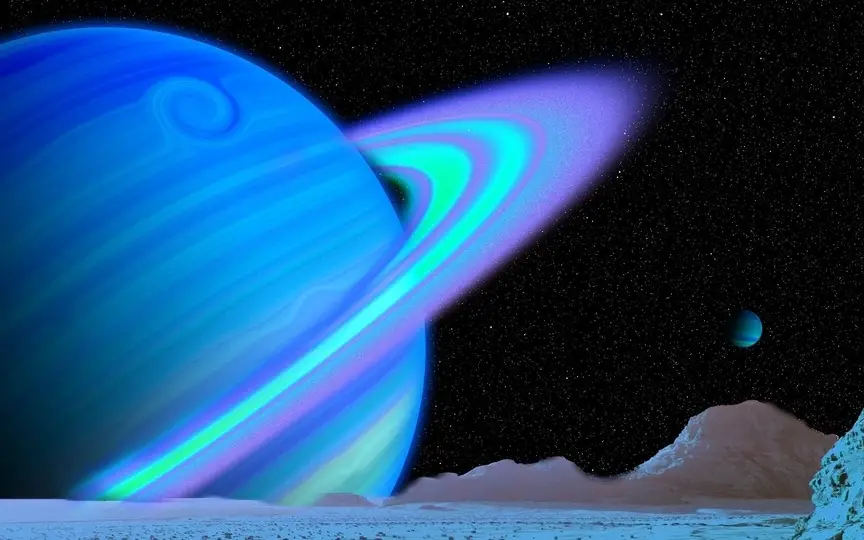Uranus’ Infrared Auroras Detected for the First Time
After almost twenty years of research, scientists have made a significant discovery by confirming the existence of breathtaking infrared auroras in the northern areas of Uranus. This finding not only improves our understanding of auroras on Uranus but also provides a glimpse into the possible reasons behind the unusually high temperature of this distant gas giant.
Uranus, like its planetary siblings, is significantly hotter than theoretical models predict, especially given its enormous distance from the Sun. Astrophysicist Emma Thomas of the University of Leicester in the United Kingdom hypothesizes that Uranus’ energetic auroras may be the key to this mystery, as they generate and channel heat from the auroras to the magnetic equator, Sciencealert reports.
Astronomical glasses Beyond Earth
Auroras occur when energetic particles are accelerated along magnetic field lines towards the planet, where they interact with particles in its atmosphere. This interaction induces ionization, resulting in a luminous display. As such, these celestial light shows are not exclusive to Earth.
For example, Jupiter and Mars have strong ultraviolet auroras, while Venus’s auroras resemble Earth’s green glow. As for Mercury, which does not have a proper atmosphere, its auroras are X-ray fluorescence from surface minerals.
The Search for the Elusive Infrared Aurora
In the case of Uranus, ultraviolet auroras have been known since 1986, and may even have an X-ray component. Efforts to find infrared auroras similar to those observed on Jupiter and Saturn have been ongoing since 1992, but have remained elusive.
Despite the limited Uranus probes, Emma Thomas and her team suspected the existence of infrared radiation that might be hidden in the data. Their breakthrough moment came in 2006 at the Keck Observatory, when they scrutinized 224 images looking for a specific ionized particle, H3+, whose glow intensity corresponds to temperature.
Their analysis revealed an increase in H3+ density without a concomitant change in temperature, indicating increased upper atmospheric ionization consistent with an infrared aurora. Thus, this milestone marks the detection of infrared auroras in the atmosphere of Uranus.
Because the auroras are associated with both Uranus’ atmosphere and magnetic field, this discovery will not only reveal the planet’s mysteries, such as its eccentric and asymmetric magnetic field, but also advance our ability to study exoplanets with planets like Neptune and Uranus. attributes.
In the words of Emma Thomas: “Our findings extend our knowledge of ice giant auroras and strengthen our understanding of planetary magnetic fields in our solar system, exoplanets and even our own planet.”




